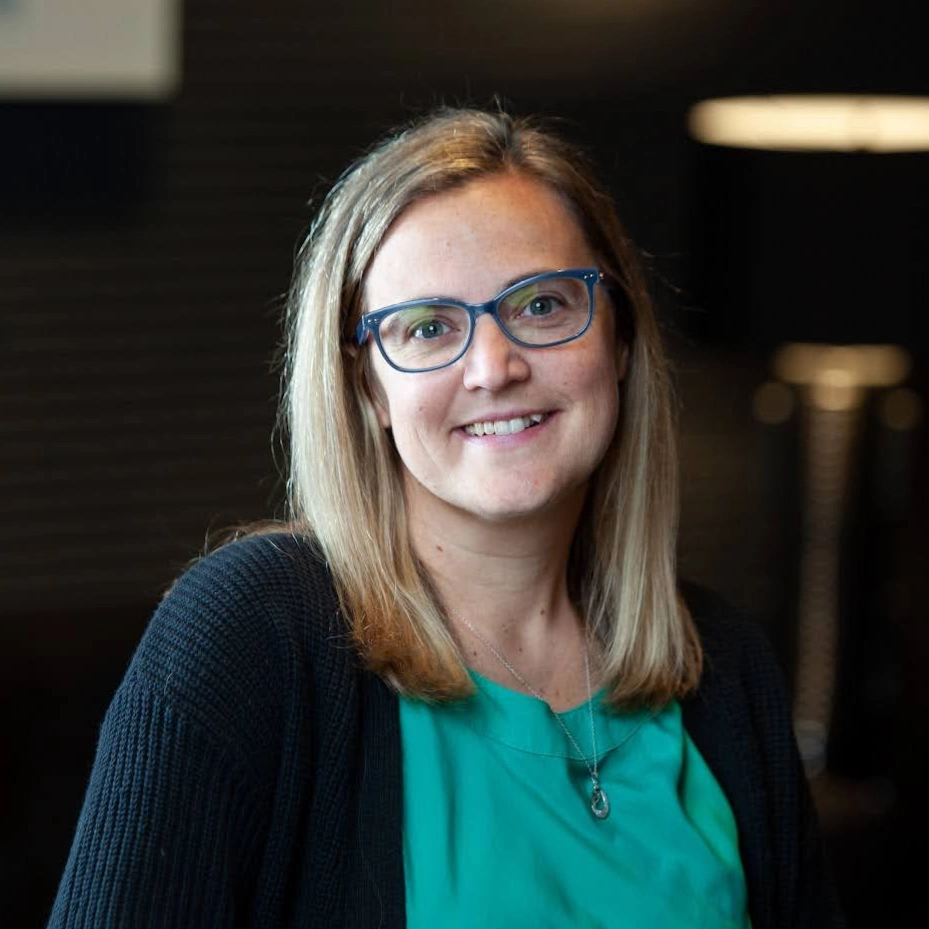
Andrea R. Ketschek , PhD
Assistant Professor of Biology
- PHONE
- (215) 572-2900
- ketscheka@arcadia.edu
Biography
- Education
2004 – 2009
- PhD in Neuroscience, Drexel University, College of Medicine (DUCOM); Philadelphia, Pa, Department of Neurobiology and Anatomy
1999 – 2003
- Bachelor of Arts, Biology; Graduated cum laude, Arcadia University; Glenside, Pa
Publications
J. Niu, S.M. Holland, A. Ketschek, K.M. Collura, H.L. Hesketh, T. Hayashi, G. Gallo, G.M. Thomas. “Palmitoylation couples the kinases DLK and JNK3 to facilitate prodegenerative axon-to-soma signaling” Sci. Signal Mar 29;15(727), eabh2674, 2022.
A. Ketschek, S.M. Holland, G. Gallo. “SARM1 Suppresses Axon Branching Through Attenuation of Axonal Cytoskeletal Dynamics” Front Mol Neurosci. Feb 21;15:726962, 2022.
A. Ketschek, R. Sainath, S. Holland, G. Gallo. “The Axonal Glycolytic Pathway Contributes to Sensory Axon Extension and Growth Cone Dynamics” J Neurosci. Aug 4;41(31):6637-6651, 2021.
L. Armijo-Weingart, A. Ketschek, R Sainath, A. Pacheco, G.M. Smith, G. Gallo. “Neurotrophins Induce Fission of Mitochondria Along Embryonic Sensory axons” eLIFE, Dec 2,8: online 2019
N. Nemani, E. Carvalho, D. Tomar, Z. Dong, A. Ketschek, S.L. Breves, F. Jaña, A.M. Worth, J. Heffler, P. Palaniappan, A. Tripathi, R. Subbiah, M.F. Riitano, A. Seelam, T. Manfred, K. Itoh, S. Meng, H. Sesaki, W.J. Craigen, S. Rajan, S. Shanmughapriya, J. Caplan, B.L. Prosser, D.L. Gill, P.B. Stathopulos, G. Gallo, D.C. Chan, P. Mishra, M. Madesh. “MIRO-1 Determines Mitochondrial Shape Transition upon GPCR Activation and Ca2+ Stress” Cell Rep. Apr:24;23(4):1005-1019, 2018.
R Sainath, L. Armijo-Weingart, A. Ketscheck, Z. Xu, S. Li, G. Gallo. “Chondroitin sulfate proteoglycans negatively regulate the positioning of mitochondria and endoplasmic reticulum to distal axons” Dev Neurobiol. Dec;77(12):1351-1370, 2017.
R. Sainath, A. Ketschek, L. Grandi, G. Gallo. “CSPGs inhibit axon branching by impairing mitochondria-dependent regulation of actin dynamics and axonal translation” Dev Neurobiol. Apr;77(4):454-473, 2017.
A. Ketschek, M. Spillane, X.P. Dun, H. Hardy, J. Chilton, and G. Gallo. “Drebrin Coordinates the Actin and Microtubule Cytoskeleton During the Initiation of Axon Collateral Branches” Dev Neurobiol. Oct;76(10):1092-110, 2016.
S. Holland, K. Collura, A. Ketschek, K. Noma, T. Ferguson, Y. Jin, G. Gallo, and G. Thomas. “Palmitoylation controls DLK localization, interactions and activity to ensure effective axonal injury signaling”. PNAS Jan 19;113(3):763-8, 2016.
A. Ketschek, S. Jones, M. Spillane, F. Korobova, T. Svitkina, G. Gallo. “Nerve growth factor promotes reorganization of the axonal microtubule array at sites of axon collateral branching”. Dev. Neurobiol. Dec;75(12):1441-61, 2015.
M. Spillane, A. Ketschek, T. Merianda, J. Twiss, G. Gallo. “Mitochondria coordinate sites of axon branching through localized intra-axonal protein synthesis”. Cell Rep. Dec26;5(6):1564-75, 2013.
M. Spillane, A. Ketschek, C. Donnelly, A. Pacheco, J. Twiss, and G. Gallo. “Nerve growth factor-induced formation of axonal filopodia and collateral branches involves the intra-axonal synthesis of regulators of the actin nucleating Arp2/3 complex”. J. Neurosci. Dec5;32(49):17671-17689, 2012.
A. Ketschek, C. Haas, G. Gallo, and I. Fischer. “The roles of neuronal and glial precursors in overcoming chondroitin sulfate proteoglycan inhibition”. Exp Neurol. Jun;235(2):627-37, 2012.
M. Spillane, A. Ketschek, S. Jones, F. Korobova, B. Marsick, L. Lanier, T. Svitkina, and G. Gallo. “The actin nucleating Arp2/3 complex contributes to the formation of axonal filopodia and branches through the regulation of actin patch precursors to filopodia”. Dev Neurobiol. Sep;71(9):747-58, 2011.
Y. Jin, A. Ketschek, Z. Jiang, G. Smith, and I. Fischer. “Chondroitinase activity can be transduced by a lentiviral vector in vitro and in vivo”. J of Neurosci Methods. Aug 15;(2):208-13, 2011.
A. Ketschek, M. Spillane, and G. Gallo. “Mechanism of NGF-induced formation of axonal filopodia: NGF turns up the volume, but the song remains the same?” Commun Integr Biol. Jan;4(1):55-8, 2011.
A. Ketschek and G. Gallo. “Nerve growth factor induces axonal filopodia through localized microdomains of phosphoinositide 3-kinase activity that drive the formation of cytoskeletal precursors to filopodia”. J Neurosci. Sept 8;30(36):12185-12197, 2010.
V. Nadar, A.R. Ketschek, K. Myers, G. Gallo, P. Baas. “Kinesin-5 is essential for growth cone turning”. Curr Biol. Dec 23;18(24):1972-7, 2008.
T.J. Nolan, X. Zhu, A. Ketschek, J. Cole, W. Grant, J.B. Lok and G.A. Schad. “The sugar glider (Petaurus breviceps): A laboratory host for the nematode Parastrongyloides trichosuri”. J of Parasitol. Oct;93(5):1084-9, 2007.
A.R. Ketschek, S.L. Jones, G. Gallo. “Axon Extension in the fast and slow lanes: Substratum-dependent contributions of myosin II”. Dev Neurobiol. Sept 1;67(10):1305-20, 2007.
A.R. Ketschek, R. Joseph, R. Boston, F.T. Ashton, and G.A. Schad. “Amphidial neurons ADL and ASH initiate sodium dodecyl sulphate avoidance responses in the infective larva of the dog hookworm Anclyostoma caninum” Int J Parasitol. Nov;34(12):1333-6, 2004.
A.R. Ketschek, A.S. Freeman, R. Boston, A.L. Habecker, F.T. Ashton, and G.A. Schad. “Vertical migratory behavior of the infective third-stage larvae of Oesophagostomum dentatum” Vet Parasitol. Sep 2;123(3-4):215-21, 2004.
J.R. Hoffman, J.H. Greenberg, D. Furuya, R.L. Craik, P. Fanelli, S. Breslow, S. Sheehan, A. Ketschek, C. Damkadutis, M. Reivich, P. Hand. “Rats recovering from unilateral barrel cortex ischemia are capable of completing a whisker-dependent task using only their affected whiskers.” Brain Res. Mar 7;965(1-2):91-9, 2003.
J. Sciacca, A. Ketschek, W. Forbes, R. Boston, J. Guerrero, F. Ashton, H. Gamble, G. Schad. “Vertical migration by the infective larvae of three species of parasitic nematodes: is the behavior really a response to gravity?” Parasitology 125: 553-560, 2002.
Research Summary
Students that work in my lab will learn a variety of techniques including basic cell culture, immunocytochemistry, and both fluorescent and phase microscopy. Students will learn molecular cloning techniques that focus on conducting genetic transformations and isolating/ amplifying DNA that will be used in neuronal transfections to study the overexpression or deletion of a specific protein. It is my ultimate goal to train students so that they can eventually independently ask important scientific questions and conduct relevant experiments in order to achieve future scientific success.

